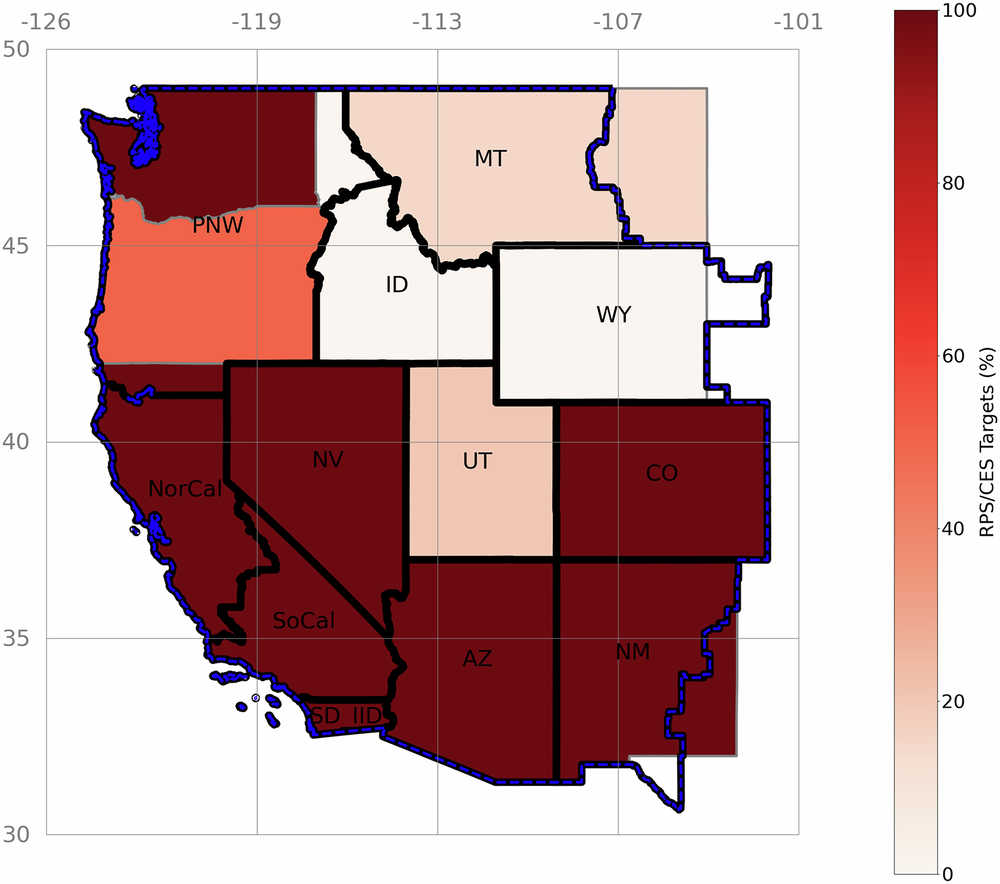Effective climate policy requires coordination among political jurisdictions with large differences in institutional make-up and interest group structures. We model the effects of realistic coordination barriers and policy heterogeneity on optimal low-carbon electricity pathways in the western United States using a capacity expansion model with operational and coordination mechanism details. We estimate the aggregate costs of fully coordinated power systems (ignoring extreme conditions) to be just a few percent lower than baseline (i.e., current) levels, noting that state-level differences can be an order of magnitude larger. Key infrastructure of a decarbonized power system that facilitates trade such as larger transmission networks is enhanced under multiple complementary coordinating policies, while select location-dependent investments such as energy storage and renewable energy respond more to the degree of market coordination. Degrees of regional coordination have limited impacts on firm low-carbon capacities, whose deployment is driven more by policy stringency, cost and availability assumptions. Climate and energy models should consider the political feasibility of different levels of market and policy coordination when evaluating optimal policy pathways.
Recommended citation:
Kucuksayacigil, F., Zhang, Z., & Davidson, M. R. (2025). Coordinating power sector climate transitions under policy uncertainty. Nature Communications, 16(1), 3786. https://doi.org/10.1038/s41467-025-59126-1

